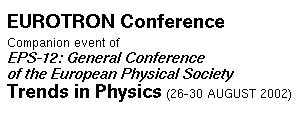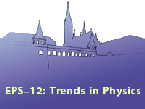 |
 |
 |
Non-destructive PIXE and XRF analysis of art and archaeological objects
A. Kocsonya*, I. Demeter, I. Kovács and Z. Szőkefalvi-Nagy
KFKI Research Institute for Particle and Nuclear Physics, Budapest, Hungary
The preservation and conservation of our cultural heritage has become one of the main concerns today all over the world. In particular there is an increasing need for non-destructive investigations, as sampling from the unique and precious objects of art and archaeometry. In addition to the conventional analytical procedures, techniques utilising nuclear instruments and methods play increasing role in this field. The small, portable X-ray fluorescene (XRF) spectrometers using radioisotope excitation allow in situ analysis in museum, galleries, on even on field. The special version of the particle induced X-ray emission spectroscopy (PIXE), where the few MeV energy proton beam is extracted to the atmosphere offers unique possibilities for detailed elemental mappings in the laboratory (external beam PIXE).
This paper presents illustrative applications of our external beam PIXE set-up and the XRF device with radioisotope excitation. The PIXE analysis of a medieval small bronze sculpture from Cambodia has furthered to find out the structure of the sculpture, while the detection of the presence of titanium in white spots of a painting provided scientific basis to decide that the painting in question was a fake.
The following files are available:
- abstractkocsonya.pdf [10292 bytes]
- abstractkocsonya.doc [21504 bytes]
Eurotron Conference is supported by European Commission, High-Level Scientific Conferences